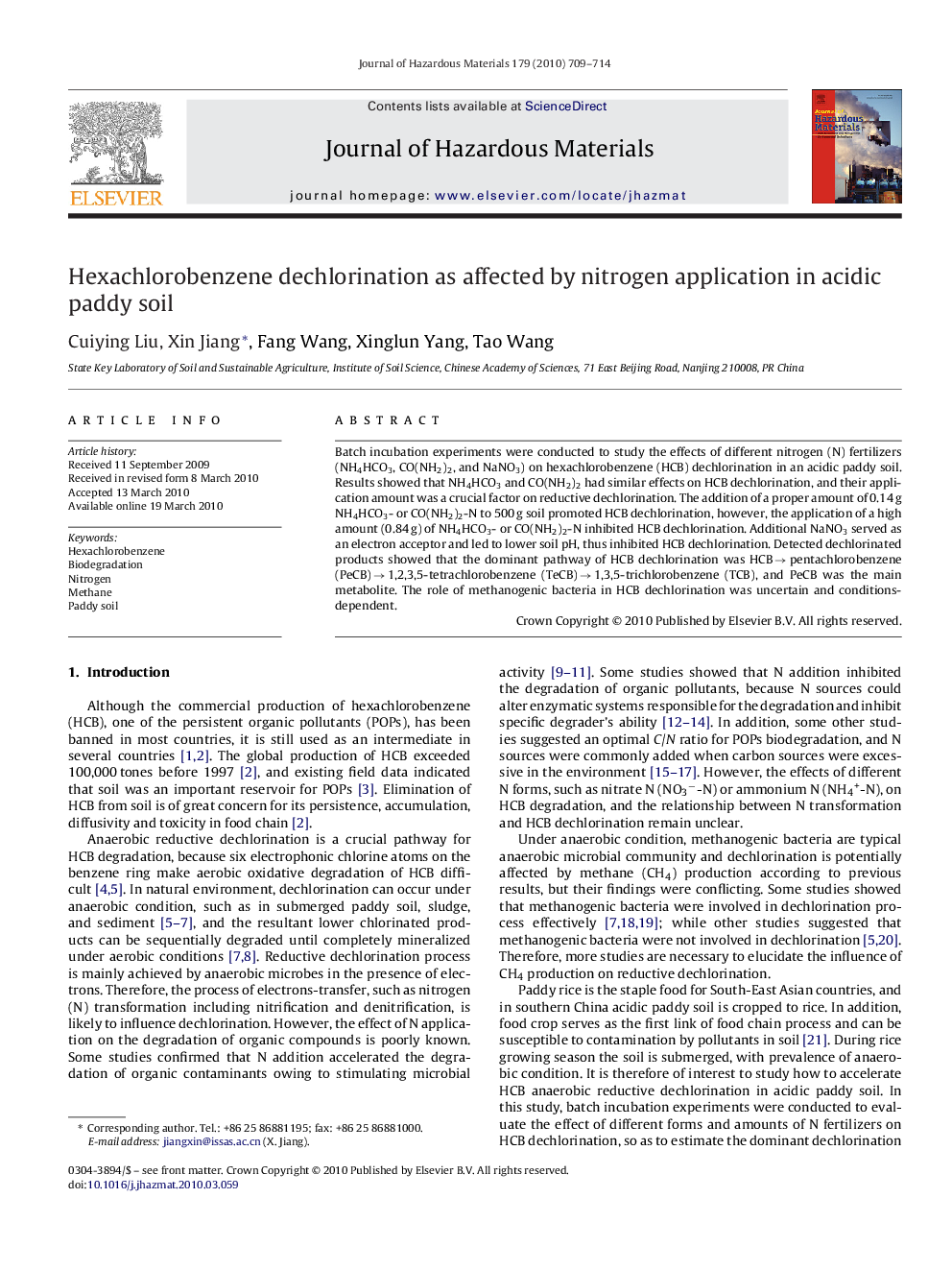| Article ID | Journal | Published Year | Pages | File Type |
|---|---|---|---|---|
| 580422 | Journal of Hazardous Materials | 2010 | 6 Pages |
Abstract
Batch incubation experiments were conducted to study the effects of different nitrogen (N) fertilizers (NH4HCO3, CO(NH2)2, and NaNO3) on hexachlorobenzene (HCB) dechlorination in an acidic paddy soil. Results showed that NH4HCO3 and CO(NH2)2 had similar effects on HCB dechlorination, and their application amount was a crucial factor on reductive dechlorination. The addition of a proper amount of 0.14 g NH4HCO3- or CO(NH2)2-N to 500 g soil promoted HCB dechlorination, however, the application of a high amount (0.84 g) of NH4HCO3- or CO(NH2)2-N inhibited HCB dechlorination. Additional NaNO3 served as an electron acceptor and led to lower soil pH, thus inhibited HCB dechlorination. Detected dechlorinated products showed that the dominant pathway of HCB dechlorination was HCB â pentachlorobenzene (PeCB) â 1,2,3,5-tetrachlorobenzene (TeCB) â 1,3,5-trichlorobenzene (TCB), and PeCB was the main metabolite. The role of methanogenic bacteria in HCB dechlorination was uncertain and conditions-dependent.
Related Topics
Physical Sciences and Engineering
Chemical Engineering
Chemical Health and Safety
Authors
Cuiying Liu, Xin Jiang, Fang Wang, Xinglun Yang, Tao Wang,
